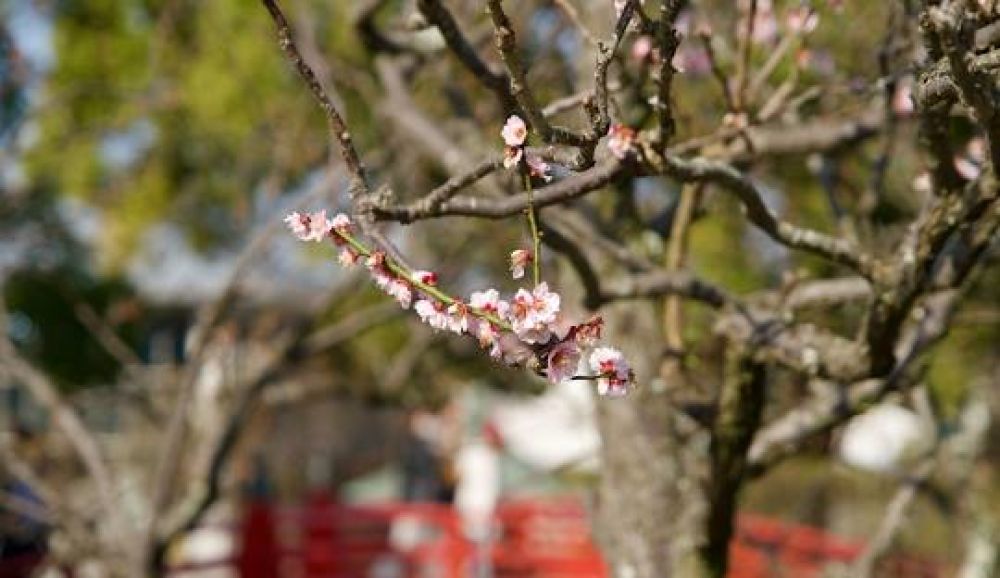

Dazaifu Tenmangu Shrine, located in Fukuoka, Japan, is a Shinto shrine that has been a significant pilgrimage destination for centuries. Dedicated to the spirit of Sugawara no Michizane, a scholar, poet, and politician of the Heian period, the shrine has a rich history dating back to its founding in 905, shortly after Michizane's death.
The site initially became a place of reverence due to the numerous legends that arose surrounding Michizane's wrongful exile and subsequent deification as Tenjin, the god of learning and education. Students and scholars from across Japan began visiting the shrine to pay respects and pray for academic success. This became the bedrock for tourism in Dazaifu, laying a cultural and religious foundation that has attracted visitors for more than a millennium.
Over the centuries, Dazaifu Tenmangu grew in importance, with the Heian period marking the beginning of its prominence. By the time of the Edo period (1603-1868), Dazaifu had already established itself as a prominent stop for pilgrims and travelers. The shrine's fame was further bolstered during this period as travel became more accessible and popular among the population.
In the late 19th and early 20th centuries, the modernization of Japan and the development of railroads and other transportation infrastructure further increased accessibility to the shrine. Dazaifu Tenmangu became a national treasure and a must-see location for domestic and international tourists.
Tourism at Dazaifu Tenmangu has been closely tied to cultural events and the academic calendar. Each year, the shrine hosts several festivals, such as the Kyokusui-no-En, a Heian period costume parade held in spring, and the Usokae, a bullfinch exchange event believed to bring good fortune which takes place in January.
In recent years, there has been an increase in experiential tourism in Dazaifu Tenmangu. Visitors are not only coming to witness the shrine's beauty and participate in cultural traditions but also to engage in immersive experiences – such as traditional tea ceremonies, calligraphy workshops, and seasonal flower viewing, particularly plum blossoms associated with Michizane.
Sustainable tourism practices have also been integrated into Dazaifu's approach, with the site balancing the preservation of its natural and cultural assets while catering to the needs of the modern traveler. Moreover, the rise of social media has seen the shrine become a photogenic hotspot for visitors, reflecting global trends towards shareable travel experiences.
The shrine's digital presence has expanded, offering online resources to potential visitors and engaging with audiences worldwide through virtual tours and social media platforms. This digital shift caters to a growing interest in virtual travel experiences, which took a substantial leap forward due to travel restrictions associated with the COVID-19 pandemic.
In conclusion, Dazaifu Tenmangu Shrine's history as a tourist destination is deeply intertwined with Japan's cultural and religious traditions. Its evolution from a local site of worship to an international tourist attraction underscores the shrine's ability to maintain its heritage while adapting to contemporary tourism trends.